Letter of inquiry template for job
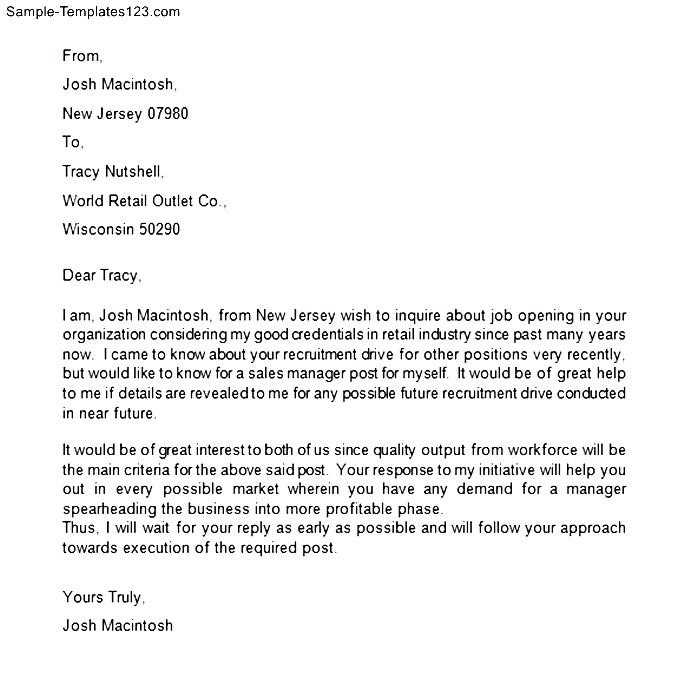
Crafting a letter of inquiry for a job involves more than just a formal request. It is a proactive approach to expressing interest in a company, whether or not a position is currently available. A well-structured letter can open doors to opportunities, even if they aren’t advertised. Your aim is to present yourself as a strong potential candidate and show that you have taken the time to research the company and understand its goals.
Start by clearly stating your intention to inquire about potential job openings. Be specific about the type of role you’re looking for, and highlight your relevant skills and qualifications. It’s important to personalize your letter, so avoid using generic templates. Make sure to research the company beforehand and refer to specific projects or initiatives they have undertaken that align with your expertise. This shows that you are genuinely interested and not just sending out mass inquiries.
Next, express your enthusiasm for the company and explain why you would be a good fit. Focus on what you can contribute to their team, and emphasize how your background makes you an ideal candidate for future roles. End the letter with a polite request for further communication, such as a phone call or meeting. Always thank the recipient for their time and consideration.
Letter of Inquiry Template for Job
Use this template to express interest in a position without a formal job listing. Make your letter concise and focused on demonstrating why you’re a good fit. Tailor it for each opportunity to increase its effectiveness.
Letter Structure
- Subject Line: Directly state the purpose of your inquiry. Example: “Inquiry Regarding Opportunities in [Department Name]”
- Greeting: Address the recipient by name, if possible. Example: “Dear [Hiring Manager’s Name],” or “Dear [Department Name] Team,”
- Opening Paragraph: Introduce yourself and state the reason for the letter. Mention how you found out about the company or express your interest in the industry. Example: “I am writing to inquire about potential job openings in your [Department Name]. With a strong background in [related field], I am eager to contribute my skills and knowledge to your team.”
- Middle Paragraph(s): Highlight relevant skills or experience that align with the company’s work. Mention any previous knowledge of the company or its projects. Keep the focus on your fit for their needs. Example: “I have experience in [specific skills or projects], which I believe will complement your team’s efforts in [specific company goals].”
- Closing Paragraph: Politely express your interest in discussing opportunities further and mention that your resume is attached (if applicable). Example: “I would welcome the opportunity to speak with you about how my experience aligns with your team’s needs. I have attached my resume for your reference.”
- Closing: End with a professional closing phrase. Example: “Thank you for your time and consideration. I look forward to hearing from you soon.” Followed by your name and contact details.
Tips for Writing an Effective Letter
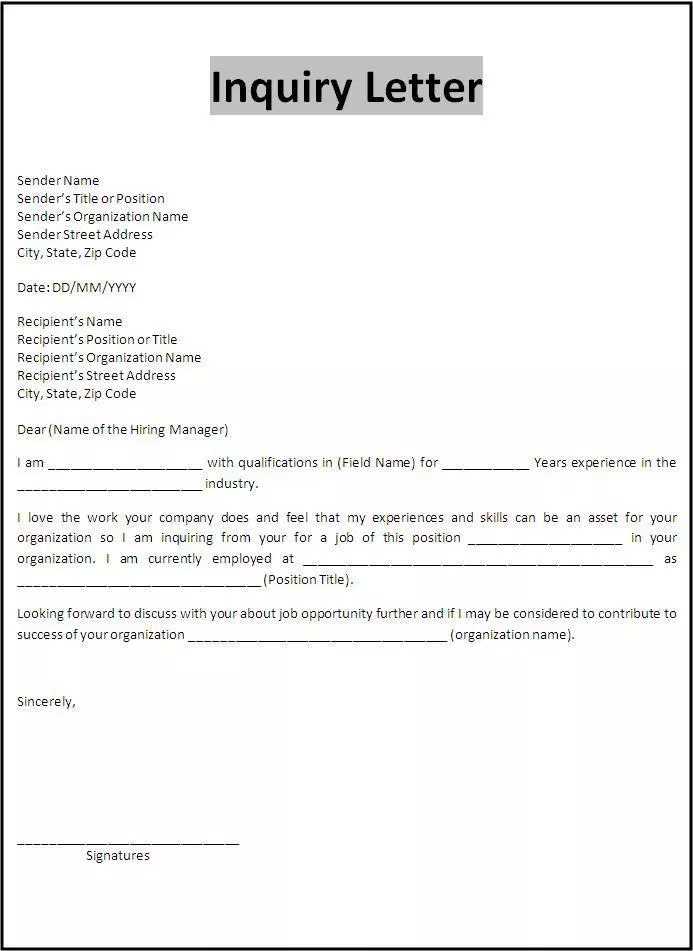
- Keep it brief: Stay focused on your main points without including unnecessary details.
- Personalize: Customize each letter for the specific company and position.
- Professional tone: Maintain a polite and professional tone throughout the letter.
- Follow up: If you don’t receive a response within a few weeks, send a polite follow-up email.
How to Start Your Letter with a Professional Greeting
Begin your letter with a direct and respectful greeting, addressing the recipient by their formal title and last name. If you are unsure of the person’s gender, use their full name instead of assumptions. For example, use “Dear Alex Johnson” or “Dear Dr. Taylor” to maintain professionalism.
Avoid overly casual openings like “Hey” or “Hello.” Instead, choose a standard greeting that matches the level of formality in the workplace, such as “Dear [Name].” If the letter is addressed to a group, use “Dear [Team/Department Name].” This conveys respect and clarity right from the start.
If you don’t know the recipient’s name, use a general but formal greeting like “Dear Hiring Manager” or “To Whom It May Concern.” This ensures your letter remains courteous and appropriate while keeping a professional tone.
Structuring the Opening Paragraph to Grab Attention
Begin with a concise, impactful sentence that communicates your enthusiasm and direct interest in the position. Address the company or role in a way that feels personal and specific, showing you’ve researched the organization.
Highlight Your Unique Fit
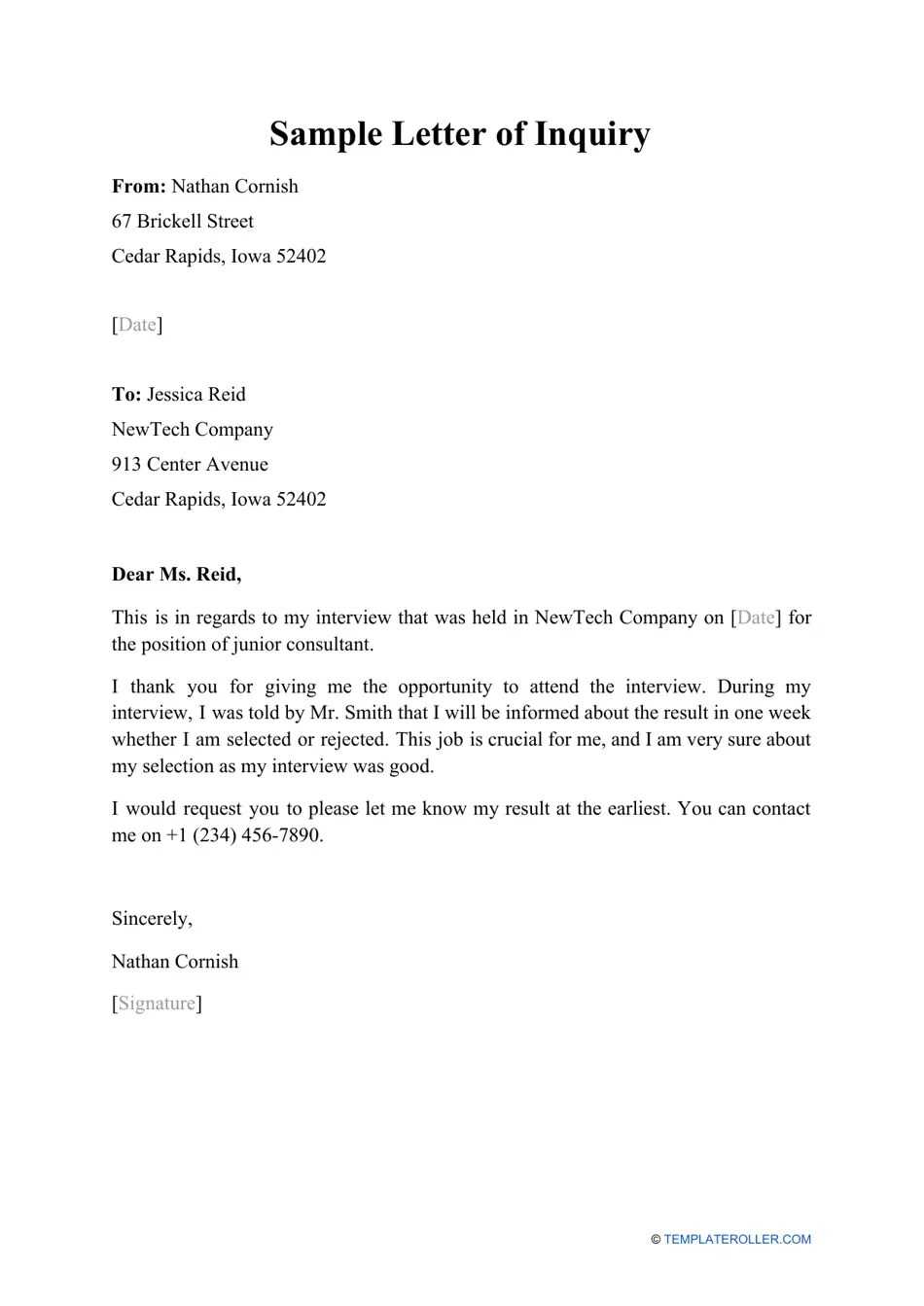
Clearly state why you’re a strong match for the role. Mention one or two key qualifications that align with the company’s needs. Focus on a skill or experience that sets you apart and immediately signals your value.
Show Immediate Value
Show how your skills directly address the company’s current objectives or challenges. Instead of vague statements, provide a concrete example of how you’ve contributed to similar situations or outcomes in the past.
How to Clearly Express Your Interest in the Position
Begin by directly stating your enthusiasm for the role and the company. A clear expression of interest sets a positive tone right from the start. For example, “I am excited to apply for the [position name] at [company name]. Your company’s commitment to [specific value or mission] aligns perfectly with my professional goals.” This immediate mention of alignment with the company’s values makes your intent clear.
Highlight Your Motivation
Focus on the specific aspects of the job that motivate you, whether it’s the opportunity to solve challenges, work with a dynamic team, or contribute to a meaningful project. Show you understand what the role entails and why it’s appealing to you. For example, “The prospect of leading a team to innovate new strategies excites me because I have successfully managed similar initiatives at [previous company].”
Link Your Skills to the Position
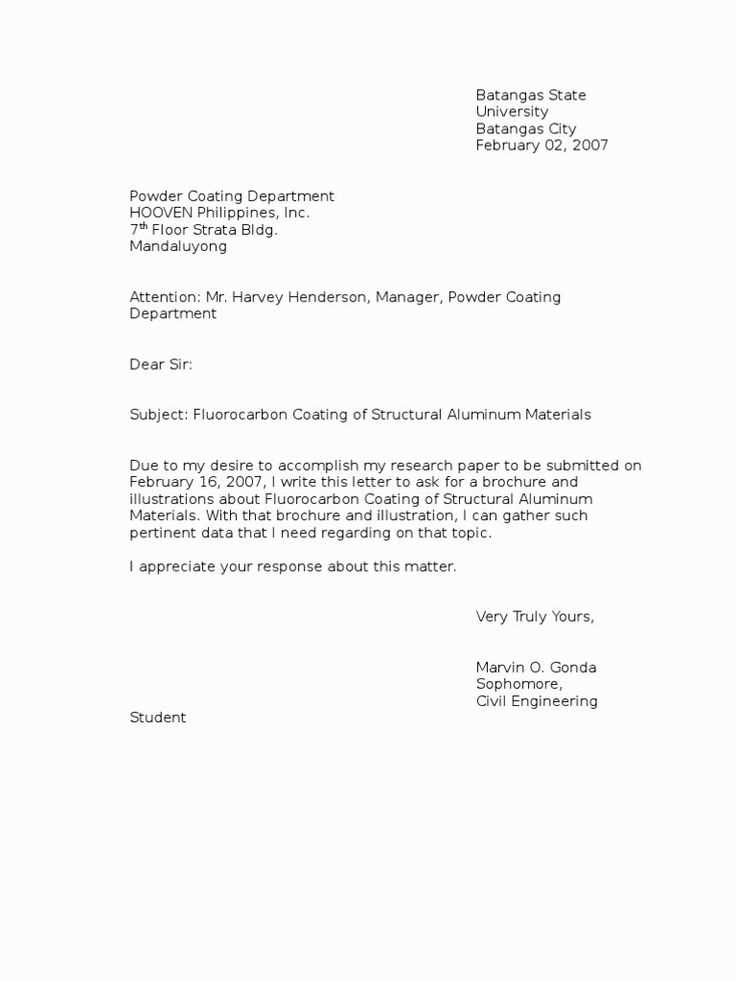
Clearly match your skills to the job requirements. Mention relevant experience and how it directly applies to what the company is looking for. For example, “My experience with [specific tool or software] has equipped me with the ability to streamline processes, which aligns with your need for someone who can enhance operational efficiency.”
By focusing on specific details about what excites you about the position and how your background aligns with the company’s needs, you effectively convey genuine interest and suitability for the role.
Highlighting Relevant Skills and Experience in the Body
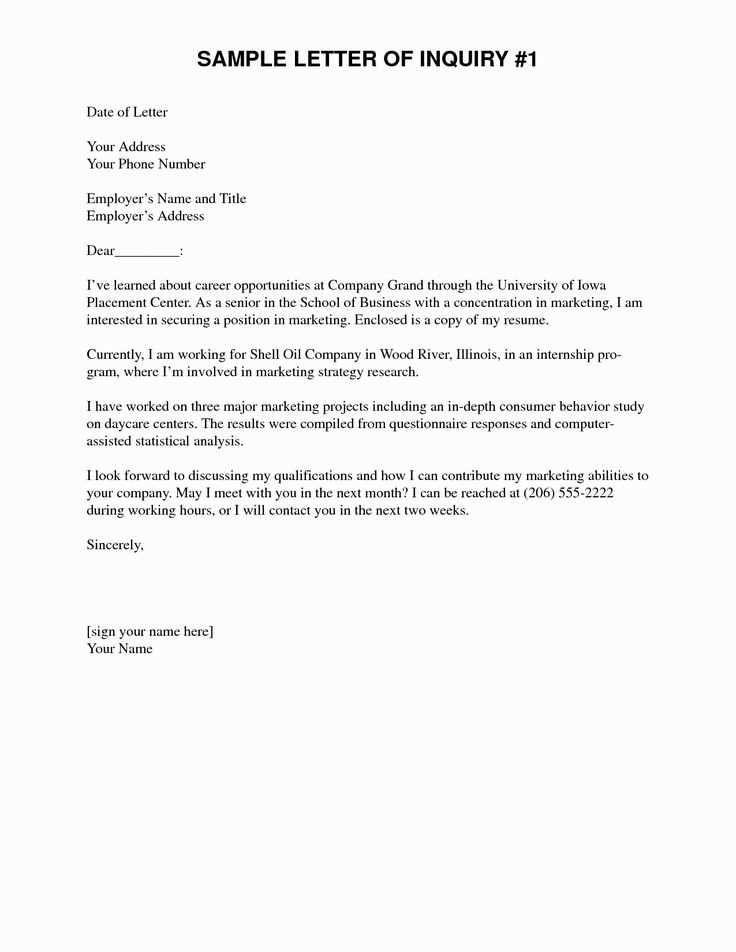
Showcase your qualifications directly in the body of your inquiry letter. Be specific and focus on how your experience matches the requirements of the position you’re seeking. Connect your past roles and achievements to the job description, emphasizing the skills that align with the employer’s needs.
- Describe specific tasks you performed that relate to the job duties listed in the posting.
- Include measurable results, such as percentages or numbers, that demonstrate your success in previous roles.
- Highlight any specialized training or certifications relevant to the role you’re applying for.
Convey your unique contributions to previous teams or projects. Share how your abilities made a difference in the organization and how you can bring the same value to the potential employer. Tailor your examples to show how your skills are transferable to the new job.
Lastly, focus on the skills that set you apart from other candidates. Whether it’s your ability to work under pressure, problem-solving skills, or expertise in specific software, make sure these strengths are clearly presented in your letter.
Making a Strong Closing Statement to Encourage Response
Directly express your interest in moving forward with the conversation. Invite the reader to respond by providing clear next steps, such as scheduling a follow-up call or meeting. Use concise language that conveys enthusiasm without being overly forceful. For example, “I look forward to discussing how my skills align with your team’s needs” sets a positive tone for further engagement. Make it easy for the recipient to take action by suggesting specific times or providing contact details.
Reaffirm your interest in the opportunity and demonstrate your readiness to take the next step. A closing like, “Please let me know a convenient time to connect” helps reinforce your availability. It also prompts them to reach out without feeling pressured, maintaining a professional but approachable tone. Always ensure the closing statement feels personal and tailored to the specific situation to make the response more likely.
Best Practices for Formatting and Proofreading Your Letter
Keep your letter concise and easy to read. Start with a clear and professional header, ensuring your name, address, and contact details are aligned. Use a readable font like Arial or Times New Roman, with a 12-point size for body text and 14-point for headings. Margins should be set to 1 inch on all sides, and the letter should be single-spaced with a space between paragraphs.
Formatting Tips
Break the content into clear sections. Start with a greeting, followed by a brief introduction and the main body, which should focus on the key points. Avoid overly long paragraphs; stick to 3-4 sentences per paragraph for better readability. Always use formal language and avoid slang or overly casual expressions. End with a professional closing, such as “Sincerely” or “Best regards,” followed by your name and contact information.
Proofreading Steps
First, review for any spelling and grammar mistakes using a reliable tool or manually. Pay close attention to verb tense, subject-verb agreement, and punctuation. Then, read the letter aloud to catch awkward phrasing or unclear sentences. Finally, ask someone else to review it to provide a fresh perspective and spot errors you might have missed.
| Element | Best Practice |
|---|---|
| Font | Arial or Times New Roman, size 12 for body text |
| Spacing | Single-spaced with a space between paragraphs |
| Margins | 1-inch on all sides |
| Paragraph Length | 3-4 sentences per paragraph |
| Proofreading Method | Check spelling, grammar, and read aloud |